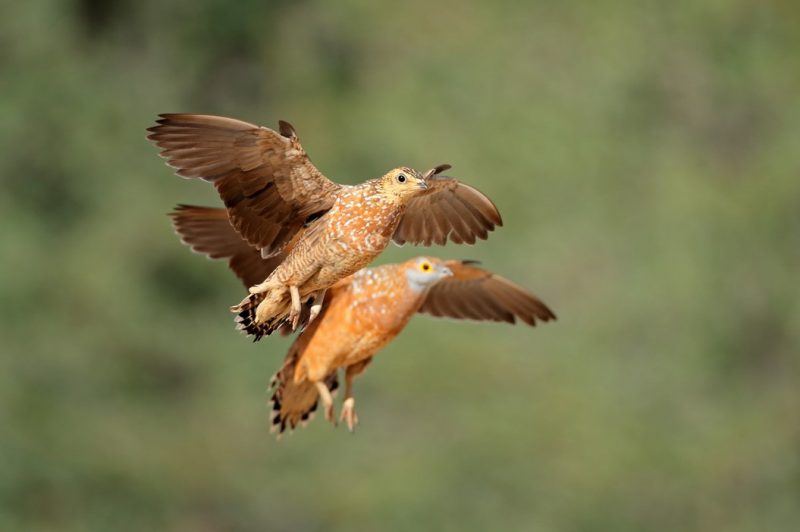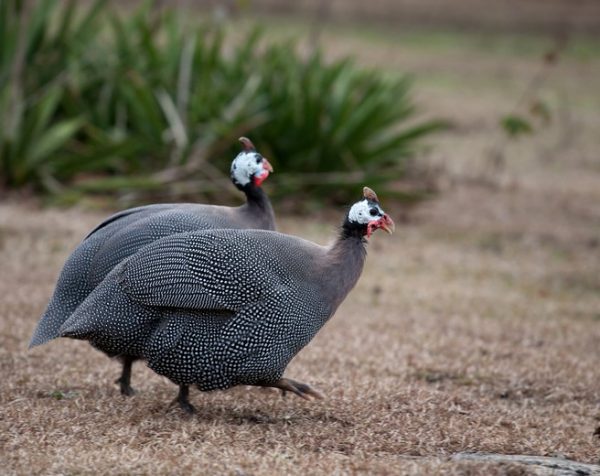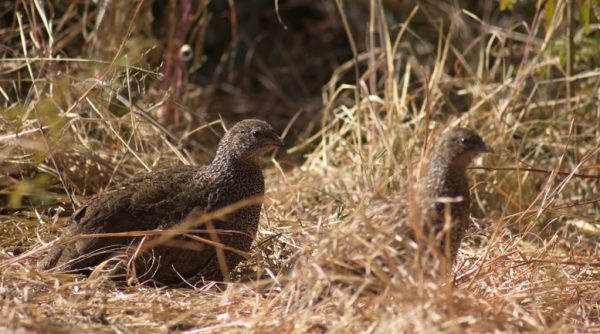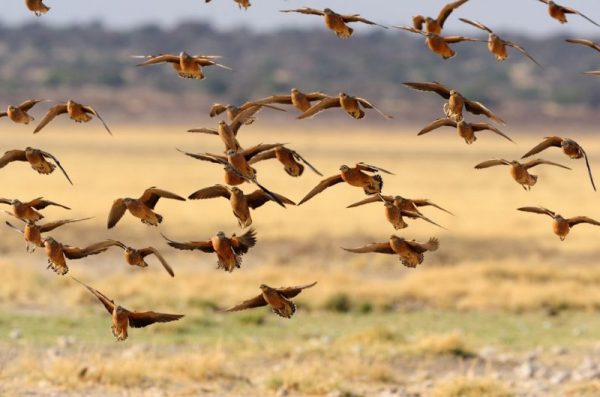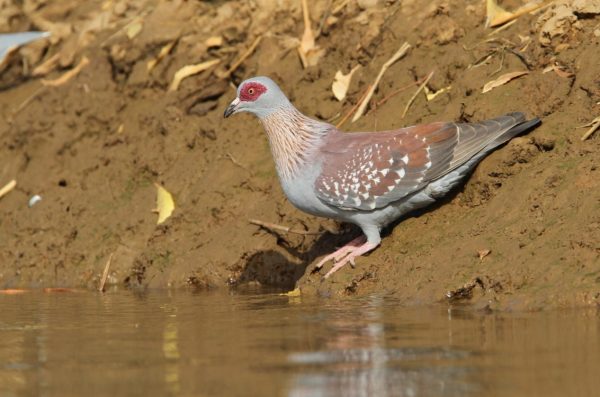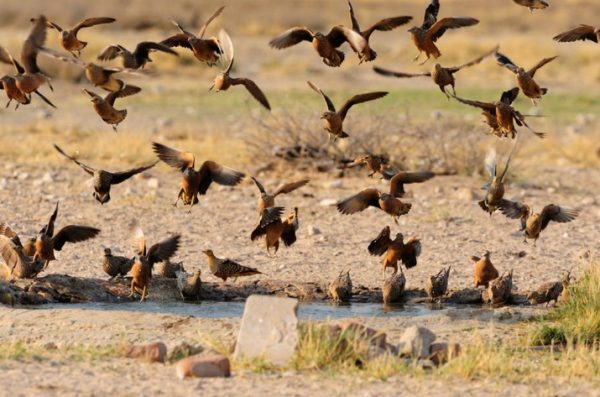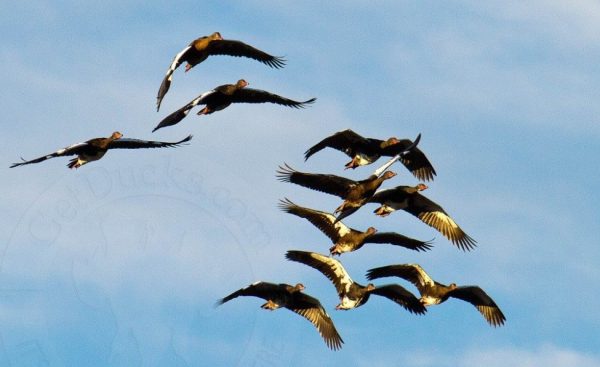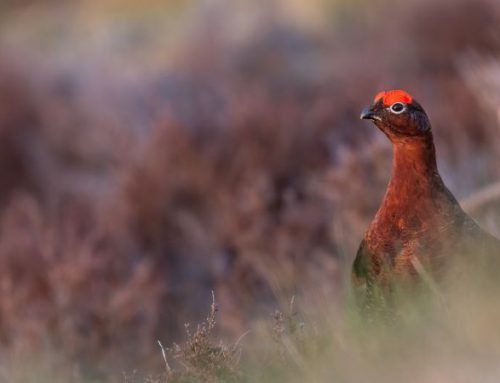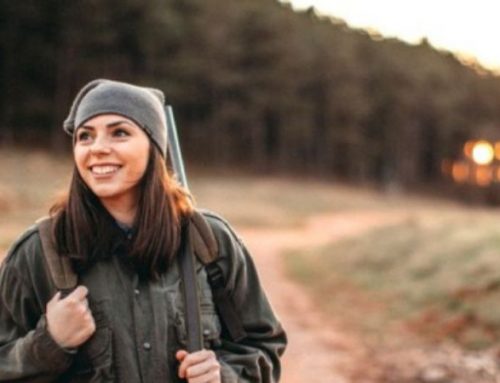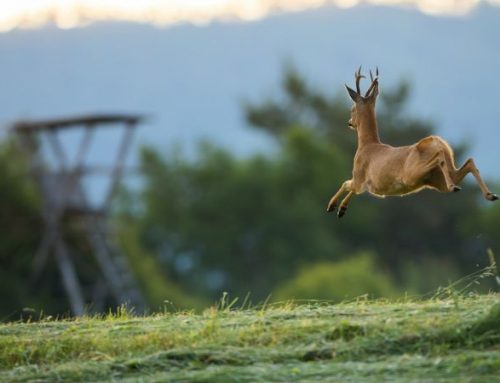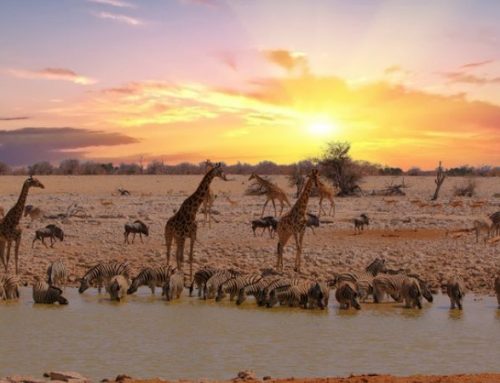Wing shooting in South Africa is not just an exciting adventure rooted in centuries of history, but also a unique opportunity to explore and experience the country’s extraordinary biodiversity.
Here, in landscapes ranging from golden savannas to rugged mountains, hunters can engage in the pursuit of various wild bird species, each with its distinctive characteristics and challenges.
The Game Species and Their Habitats
Guinea fowl, among the most iconic species, are a symbol of South Africa’s wildlife. These birds, easily recognizable by their spotted plumage and erect crests, inhabit grasslands and savannas. Their habit of moving in large flocks and their rapid, zigzagging flights make hunting them a test of skill and reflexes.
Francolins, another prized target, can be found across a wide range of habitats, from semi-arid regions to the lush grasslands of the highveld. Among them, the Grey-winged Francolin is particularly valued by hunters for its cunning and ability to blend into the rocky and vegetated mountain terrain. Hunting this bird, often on rough ground and in variable weather conditions, presents both a physical and tactical challenge.
Sandgrouse, with their long wings and ability to cover great distances, are perfectly adapted to arid and semi-desert environments. These birds, which move in groups and feed in the early morning hours, are renowned for their fast and unpredictable flights, posing a significant challenge even to the most experienced hunters.
African rock pigeons, common in agricultural areas and rocky outcrops and also known as “Speckled Pidgeons”, are frequent but no less challenging prey. These birds, with their quick and erratic flights, require hunters to be ever alert, adapting constantly to the terrain and weather conditions. Pigeon shooting is often associated with agricultural lands, where these birds find an abundance of food.
A Rich Historical Heritage
The origins of this ancient practice date back to the 17th century when the first Dutch settlers landed on South Africa’s shores. Over time, wing shooting evolved, enriched by British traditions and local practices. During the British colonial period of the 19th century, wing shooting became not just a sport, but a significant social event. Hunting expeditions, which often involved weeks of preparation and long journeys, were occasions for the colonial elite to demonstrate their prestige and sophistication.
These meticulously organized hunts were not only moments of leisure but also opportunities to strengthen social ties and discuss business and politics in an informal yet exclusive setting. British influence brought a more formalized approach to wing shooting, introducing game management practices and regulated hunting seasons to ensure the sustainability of bird populations.
The Evolution of Wing Shooting in South Africa During the 20th Century
The 20th century was a transformative period for wing shooting in South Africa, shaped by profound social, economic, and environmental changes. As the nation moved through the end of colonial rule and into the era of the Republic of South Africa in 1961, wing shooting evolved from an exclusive pastime for the elite to a more accessible and sustainable activity embraced by diverse communities.
The Influence of Agriculture on South African Wing Shooting
In South Africa, the expansion of agriculture during the 20th century had a significant impact on game bird populations. The conversion of natural habitats into farmland initially led to the loss of wetlands and grasslands, negatively affecting certain species like the grey-winged francolin and Cape spurfowl. However, other species, such as guinea fowl and doves, adapted to agricultural landscapes, benefiting from the increased availability of food provided by crops like maize and sunflower.
Recognizing the delicate balance between farming and wildlife, South African farmers began integrating wildlife management into their agricultural practices. By maintaining strips of natural vegetation, protecting water sources, and planting cover crops, they created habitats conducive to game bird populations. This approach not only supported sustainable hunting but also underscored the mutual benefits of conservation and agricultural productivity.
From Colonial Exclusivity to Democratic Access
Under colonial rule, wing shooting in South Africa was predominantly an activity reserved for the elite. Wealthy landowners and colonial officials enjoyed access to expansive hunting estates, while local communities were largely excluded from participation. However, the mid-20th century brought significant social and political changes, including the end of colonial rule and the establishment of the Republic.
These shifts contributed to the democratization of wing shooting, as the activity became accessible to a broader segment of the population. Local farmers, rural landowners, and members of South Africa’s growing middle class began to engage in hunting as a recreational activity. This inclusivity was further supported by the proliferation of private game farms and preserves, which catered to both local and international hunters.
Technological Advancements and Their Impact
The technological advancements in firearms and ammunition during the 20th century significantly influenced wing shooting in South Africa. Improved shotgun designs, such as lighter and more precise models, enhanced the accuracy and safety of hunters. The introduction of non-toxic shot materials also addressed growing environmental concerns, particularly in wetland habitats that were vital for waterfowl hunting.
These innovations made wing shooting more accessible and sustainable. Affordable firearms and specialized ammunition allowed a greater number of South Africans to participate in the sport, while ensuring that hunting practices aligned with conservation goals.
The Role of Private Game Farms and Conservancies
In South Africa, private game farms and conservancies became central to the evolution of wing shooting during the 20th century. These establishments combined hunting with habitat preservation, creating a model that balanced recreational sport with ecological sustainability. By managing their land to support diverse game bird populations, these farms played a key role in ensuring that species such as guinea fowl, francolin, and ducks thrived despite broader environmental challenges.
Game farms also contributed to the rural economy, providing employment opportunities and generating income through hunting and eco-tourism. This economic incentive encouraged landowners to invest in conservation practices, demonstrating the compatibility of wing shooting with responsible land stewardship.
Conservation and Ethical Hunting Practices
The 20th century marked a growing awareness of the need for conservation among South African hunters. Organizations and local hunting associations began promoting sustainable practices, emphasizing the importance of maintaining healthy game bird populations and preserving critical habitats. Ethical hunting, including adherence to bag limits and selective harvesting, became a cornerstone of South African wing shooting culture.
Hunters played a vital role in conservation efforts, funding habitat restoration projects and advocating for the protection of wetlands and grasslands. This proactive approach ensured that hunting was not only sustainable but also beneficial to South Africa’s broader ecological health.
The Legacy of Wing Shooting in South Africa
The evolution of wing shooting in South Africa during the 20th century reflects the nation’s broader social and environmental transformations. From its roots as an exclusive pastime of the colonial elite, it grew into an inclusive and sustainable activity that brought together diverse communities and contributed to conservation efforts.
Today, the lessons learned during this period continue to shape wing shooting in South Africa. Private game farms, responsible hunting practices, and the integration of conservation with recreation have ensured that the sport remains a cherished tradition, deeply connected to the country’s landscapes and heritage. South Africa’s wing shooting legacy is a testament to the enduring relationship between people, wildlife, and the land they share.
Wing Shooting Today: Balancing Tradition and Conservation in South Africa
In South Africa, wing shooting has evolved into a deeply respected sport that balances rich traditions with modern conservation practices. With its diverse habitats and unique array of game bird species, South Africa offers some of the most challenging and rewarding wing shooting experiences in the world. However, as environmental and social dynamics shift, the practice is increasingly framed within the context of sustainability and ethical responsibility.
The Unique Nature of Wild Bird Shooting in South Africa
Unlike the managed shoots popular in other parts of the world, wing shooting in South Africa often relies on the pursuit of truly wild birds. Species such as guinea fowl, francolin, and spur-winged geese roam freely across vast landscapes, making their movements and behavior unpredictable. This reliance on wild game adds an extra layer of challenge and excitement for hunters, who must adapt to the ever-changing conditions of the field. Factors such as seasonal migrations, food availability, and weather patterns play a significant role in determining the success of a hunt.
The unpredictability of wild bird shooting is part of its allure. Hunters must develop a deep understanding of the environment and the habits of the birds they pursue. Whether stalking guinea fowl in the grassy savannas or flushing francolin from dense brush, wing shooting in South Africa requires patience, skill, and a strong connection to the natural world.
Conservation and Habitat Management
Today, wing shooting in South Africa exists within a framework of growing awareness about conservation. The country’s diverse ecosystems, from wetlands to grasslands, are home to a wide variety of game birds, each with specific habitat requirements. However, habitat loss, climate change, and unsustainable agricultural practices pose significant threats to these populations.
To address these challenges, farmers, conservancies, and hunters have embraced integrated approaches to habitat management. Many private game farms now allocate portions of their land to conservation, maintaining wetlands, preserving indigenous vegetation, and planting cover crops to support game birds. These efforts not only enhance hunting opportunities but also contribute to the broader preservation of South Africa’s biodiversity.
Ethical Hunting Practices and Sustainability
The practice of ethical hunting is central to the future of wing shooting in South Africa. Hunters are increasingly adopting sustainable practices, such as adhering to bag limits, targeting non-breeding individuals, and avoiding over-harvesting. These measures are designed to maintain healthy game bird populations and ensure that hunting remains a sustainable activity for generations to come.
Education plays a crucial role in promoting ethical hunting. Many wing shooting guides and outfitters in South Africa emphasize the importance of respecting the land, the wildlife, and the traditions of the sport. New hunters are encouraged to learn not only the technical aspects of shooting but also the ecological and cultural context in which the sport exists.
The Economic Role of Wing Shooting
Wing shooting also plays a significant economic role in South Africa, particularly in rural areas. Private game farms and hunting lodges generate income through hunting tourism, attracting both local and international enthusiasts. This revenue supports conservation initiatives, provides jobs, and stimulates the local economy. By creating economic incentives for wildlife conservation, wing shooting has become an important tool for preserving habitats and species.
The international appeal of South African wing shooting lies in its authenticity. Hunters are drawn to the country for the chance to pursue wild birds in their natural habitats, guided by experienced professionals who understand the unique challenges of the terrain. This demand underscores the importance of maintaining the balance between sport and sustainability.
The Future of Wing Shooting in South Africa
Looking ahead, the future of wing shooting in South Africa depends on the collective efforts of hunters, landowners, and conservationists to preserve the delicate balance between tradition and sustainability. As environmental pressures continue to mount, the need for responsible management of game bird populations and their habitats becomes increasingly urgent.
Collaboration will be key. Farmers and conservancies must work together to ensure that agricultural practices are compatible with wildlife conservation. Hunters, in turn, must continue to prioritize ethical practices, respecting bag limits and contributing to habitat restoration initiatives.
Technology and data also have a role to play. Advances in wildlife monitoring, such as the use of drones and GPS tracking, can provide valuable insights into game bird movements and population dynamics. These tools can help inform sustainable hunting practices, ensuring that decisions are based on scientific evidence.
Educational outreach will be essential for engaging the next generation of hunters. Programs that teach young people about the cultural and ecological significance of wing shooting can instill a sense of responsibility and stewardship. By fostering an appreciation for the sport’s traditions and its connection to the land, these initiatives can help secure the future of wing shooting in South Africa.
A Legacy Worth Preserving
Wing shooting in South Africa is more than a sport; it is a tradition deeply intertwined with the country’s landscapes and heritage. The challenge of pursuing wild birds, the camaraderie of shared hunts, and the responsibility of conserving habitats all contribute to the unique character of the experience.
As South Africa moves forward, the continued success of wing shooting will depend on its ability to balance the demands of sport, tradition, and conservation. By embracing sustainable practices and fostering a culture of respect for wildlife and the environment, South Africa can ensure that wing shooting remains a vibrant and valued part of its natural and cultural heritage.

